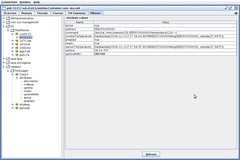- Download from SourceForge
- Download from Google Code
- Get source code from Subversion
CHANGES since 3.1-PASSIVE
Most important change: you can control your HVAC equipment again.- Fixed JMX control - only monitoring was possible before, complete control is possible now for attributes exposed;
- Improved JMX representation - composite objects are now rendered correctly;
- Ported HVAC equipment control logic from DZ1 code base.
CONFIGURATION
Blog format doesn't play well with XML excerpts, and as configuration is becoming more and more complex, it becomes more and more difficult to post it here. I'm currently writing the DZ3 configuration guide, and when it is ready, it'll be posted at DIY Zoning Project site, and this post will be updated to reflect the actual page.Having said that, let me emphasize that this is an experimental release with many known bugts and even more unknown. Hence,
BIG RED WARNING
Just like it says here: YOU MUST UNDERSTAND THE CONSEQUENCES AND TAKE RESPONSIBILITY. THIS IS YOUR EQUIPMENT. IF YOU DO IT, YOU'RE ON YOUR OWN. IF IT BREAKS, YOU KEEP BOTH PIECES.NEXT RELEASE
There are several possible directions where development efforts may be directed, and your voice counts. Please take a look at the poll on your right, and choose the option that suits you best. For now, here's an extended description of these directions.Interface
Right now, this project is in a geek-only mode - Spring configuration is needed to boot it, JMX is the only way to control it. A GUI is much needed, with three distinctly different versions possible:- GUI-Swing
- GUI-Web
- GUI-Android
